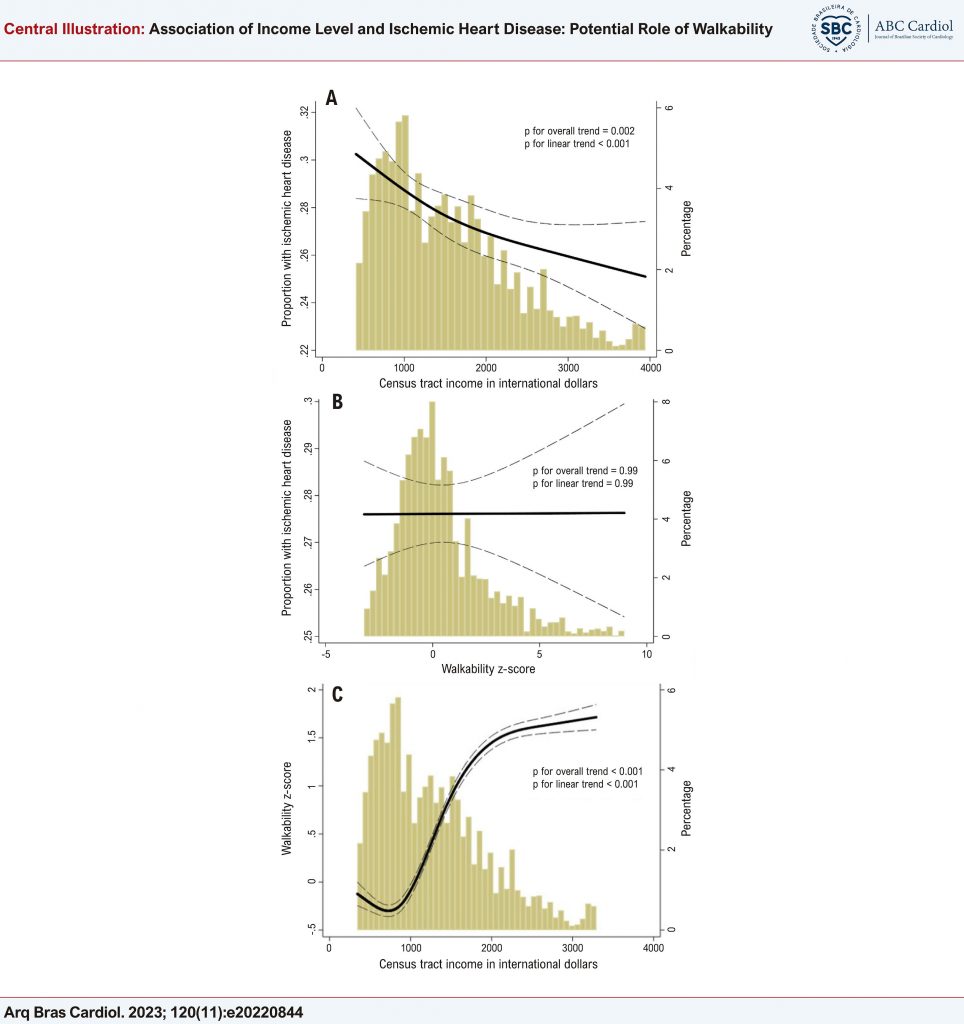Arq. Bras. Cardiol. 2023; 120(11): e20220844
Association of Income Level and Ischemic Heart Disease: Potential Role of Walkability
This Original Article is referred by the Short Editorial "Ischemic Heart Disease and Income Level – A Thinking on Social and Structural Determinants".
Abstract
Background
Socioeconomic status has been linked to ischemic heart disease (IHD). High-income neighborhoods may expose individuals to a walking-promoting built environment for daily activities (walkability). Data from the association between income and IHD is lacking in middle-income countries. It is also uncertain whether walkability mediates this association.
Objectives
To investigate whether income is associated with IHD in a middle-income country and whether neighborhood walkability mediates the income-IHD association.
Methods
This cross-sectional study evaluated 44,589 patients referred for myocardial perfusion imaging (SPECT-MPI). Income and walkability were derived from participants’ residential census tract. Walkability quantitative score combined 4 variables: street connectivity, residential density, commercial density, and mixed land use. IHD was defined by abnormal myocardial perfusion during a SPECT-MPI study. We used adjusted mixed effects models to evaluate the association between income level and IHD, and we performed a mediation analysis to measure the percentage of the income-IHD association mediated by walkability. We considered p values below 0.01 as statistically significant.
Results
From 26,415 participants, those living in the lowest-income tertile census tract were more physically inactive (79.1% versus 75.8% versus 72.7%) when compared to higher-income tertile census tracts (p < 0.001). Income was associated with IHD (odds ratio: 0.91 [95% confidence interval: 0.87 to 0.96] for each 1,000.00 international dollars increase in income) for both men and women equally (p for interaction = 0.47). Census tracts with a higher income were associated with better walkability (p < 0.001); however, walkability did not mediate the income-IHD association (percent mediated = −0.3%).
Conclusions
Income was independently associated with higher prevalence of IHD in a middle-income country irrespective of gender. Although walkability was associated with census tract income, it did not mediate the income-IHD association.
Keywords: Income; Myocardial Ischemia; Myocardial Perfusion Imaging
833

